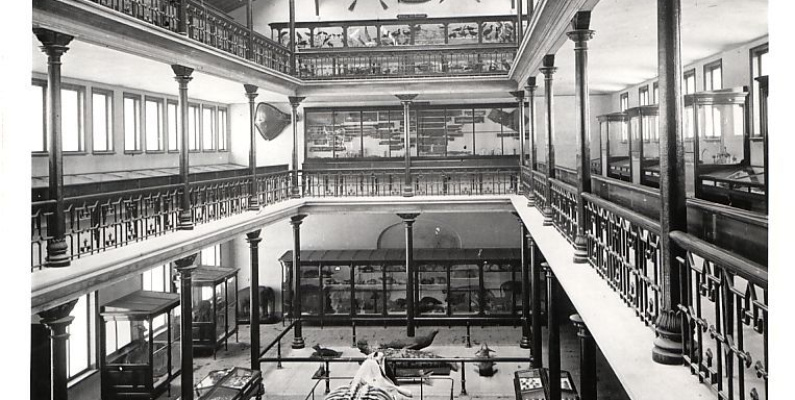
On 12 September 1868 the Otago Museum proudly opened its doors “to the public on Tuesdays, Thursdays, and Saturdays”. [1]
Items left over from the successful Dunedin Industrial Exhibition, held in 1865, had been packed away for three years in a “very ugly iron store” whose windows had been target practice for “the amusement” of local boys. Reporting on the progress of the museum, the Otago Daily Times noted it was fortunate, “that the stuffed birds, and other similar specimens have not suffered during their three years, of damp immurement”. [2] Fortunate indeed.
Eventually, bowing to public pressure, the Otago Provincial Council appointed a curator in 1873. They made a wise choice in Captain F W Hutton, a former soldier who had served in the commissariat (the supply and logistics section) of the Royal Welch Fusiliers in both the Crimea and India. In a letter he wrote, “I am so fond of geology and natural history, and am so anxious to get employment in the scientific line, that I would willingly take the place for a very small salary, say £100 or £200 a year, and travelling expenses paid”. [3] His eventual museum salary was slightly more: about £300 a year and was supplemented by lecturing at the new university.
Hutton energetically took to the role of museum builder. In his first annual report he noted, “My first care was...to appoint a Taxidermist. Mr Jennings received the appointment; and the number and beauty of the birds that he has set up since then will speak for his zeal and talent”. [4]
Later that year he wrote enthusiastically to his friend and colleague Julius von Haast in Christchurch: “You will be delighted to hear that I have got a large collection of moa bones from a swamp at Hamilton’s diggings on the Taieri.” As an afterthought he added, “It will be the making of this museum, and they will have now to put up a building”. [5] Now Hutton had moa bones that he could trade with other museums.
When the new Museum opened on Great King Street (its current location) in August 1877, the displays featured “numerous predaceous beasts (stuffed), including representatives of the lion and tiger species, seals, sharks, monkeys...here found in life-like postures”. [6] The result of Jennings’ skill was plain for all to see. At the opening a reporter noted, “the eye is literally bewildered with the superb collection of birds of all countries and climes”. [7]
Despite the overwhelming feathered appearance of the early displays, Hutton was clear in his ambition for the Otago Museum collections: “I wish to get up a type collection for teaching Natural History, and not just a peep show of birds.” [8] Hutton wanted a balanced show but was aware that public popularity depended on the ability to acquire exotic exhibits that both entertained and informed.
150 years later and the Otago Museum holds more than 1.5 million items. An exhibition celebrating the diversity of the collection and the 150th anniversary of the Museum, est. 1868, is open daily in the Special Exhibitions Gallery, 10am–5pm until 14 April 2019.
[1] Anonymous, “[Editorial],” Otago Daily Times, 8 September 1868, 2.
[2] Anonymous, “Otago Museum,” Otago Daily Times, 8 August 1868, 7.
[3] F W Hutton, “to James Hector, 9 August,” 1866, Hector Papers Correspondence, (MS-0443-3/04), Hocken Collections the University of Otago.
[4] F W Hutton, “Otago Museum,” Appendix to Votes & Proceedings of the Otago Provincial Council Session XXXIII(1874): 79.
[5] F W Hutton, “to Julius Haast, 19 [illegible],” 1874, Haast Family Papers, (MS-0717-08/109), Alexander Turnbull Library.
[6] Anonymous, “The New Museum,” Otago Witness, 18 August 1877, 7.
[7] Anonymous, “The New Museum,” Otago Daily Times, 11 August 1877, 3.
[8] F W Hutton, “to Dr Gray, 26 July,” 1874, Hutton Correspondence, (DF ZOO/200/4/88-98), Natural History Museum.
Top image: The interior of Otago Museum in 1878. Otago Museum archives.
